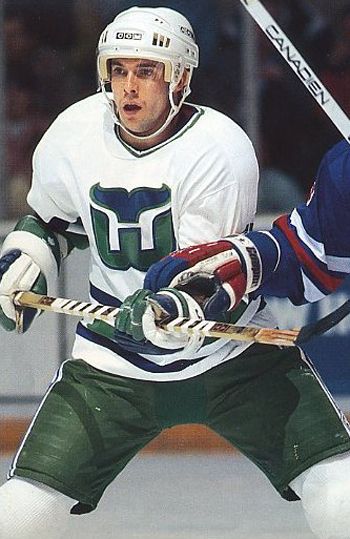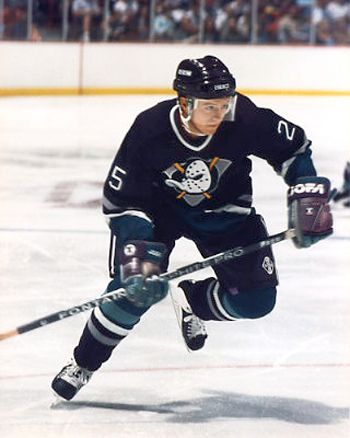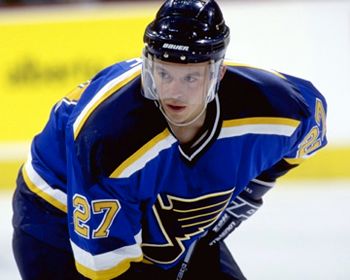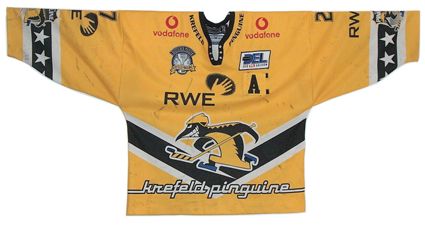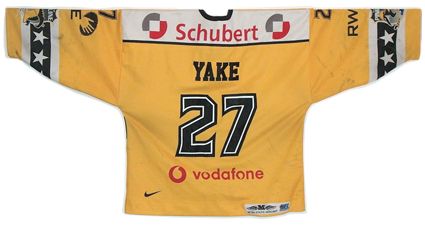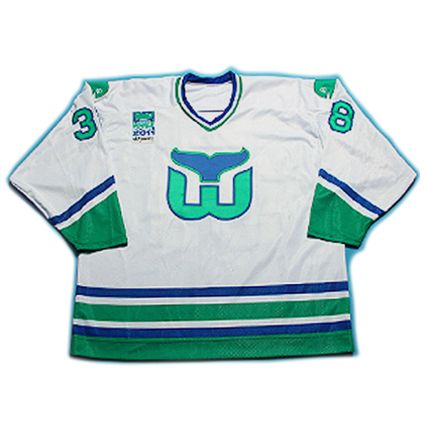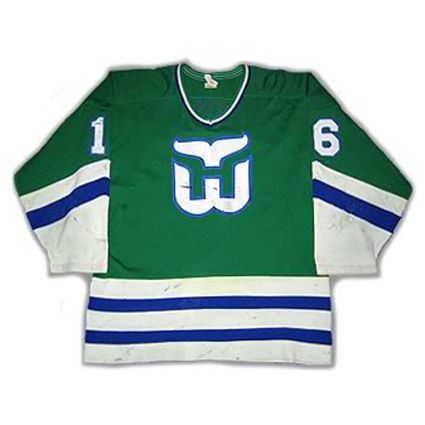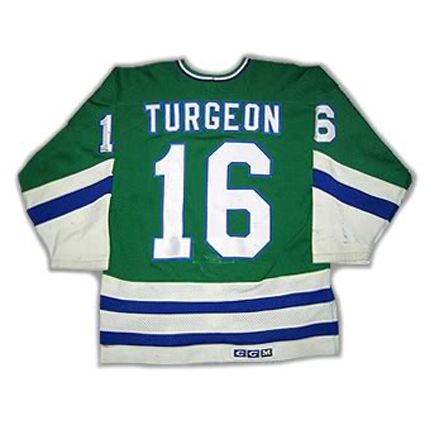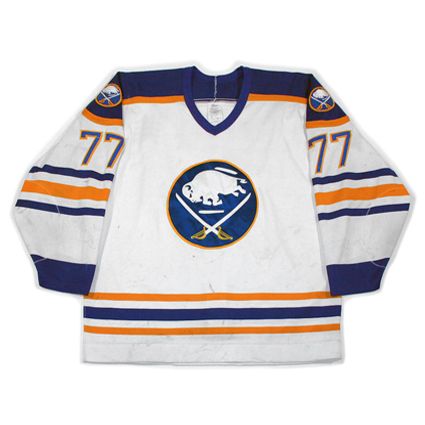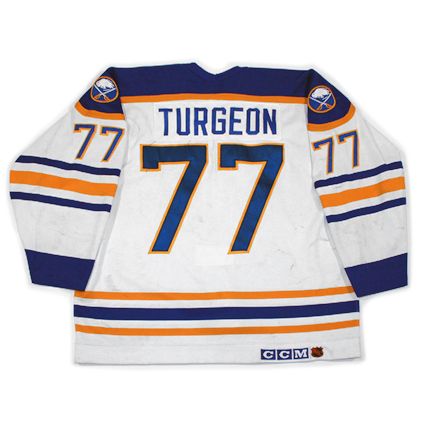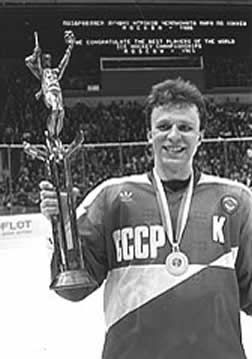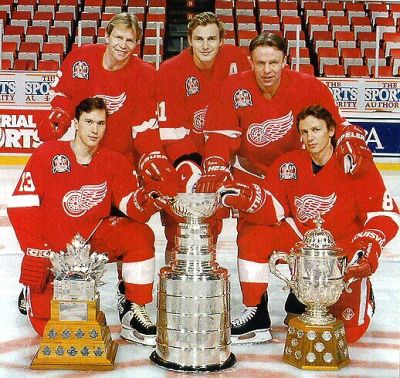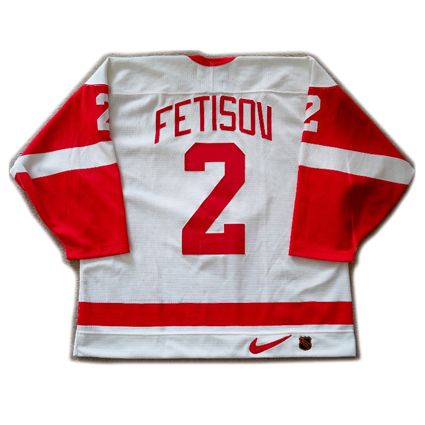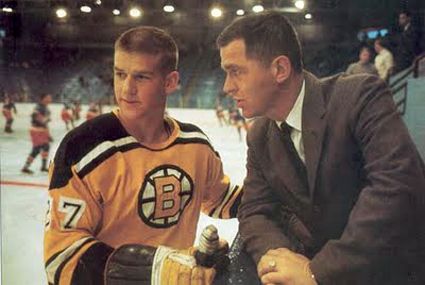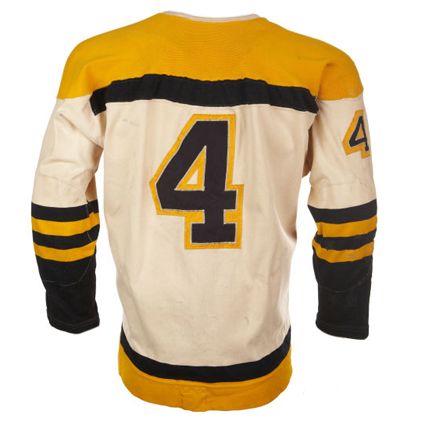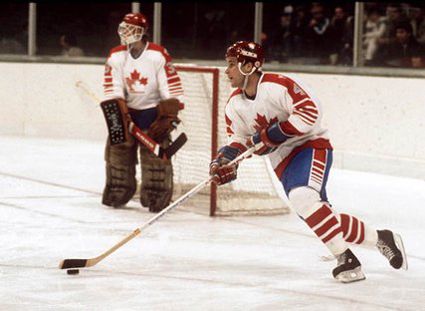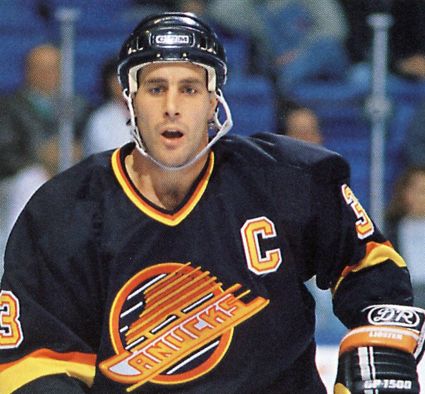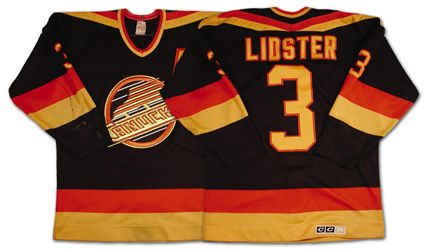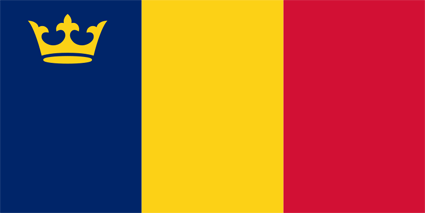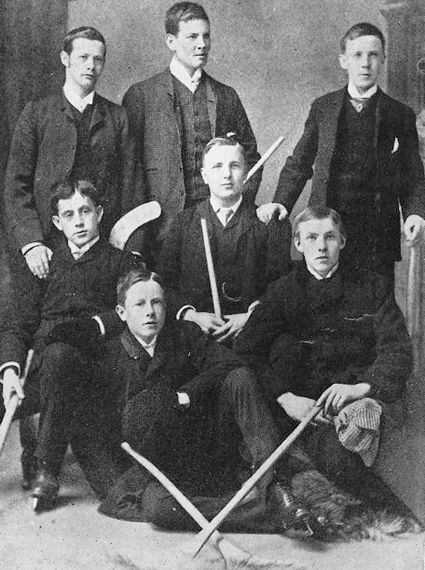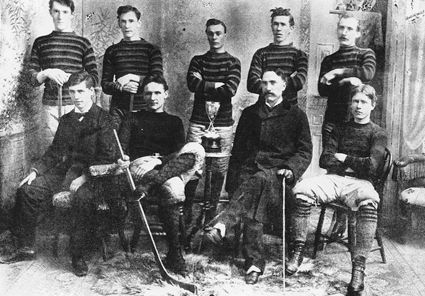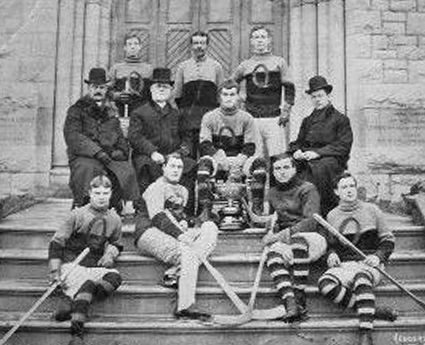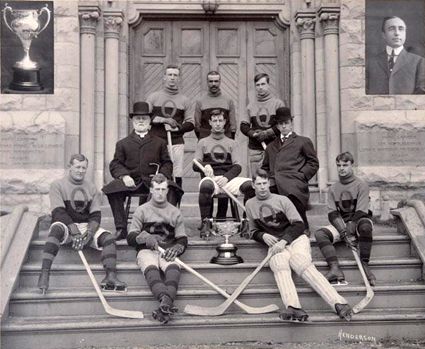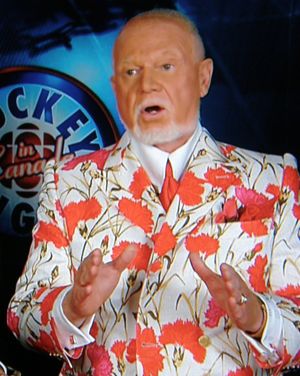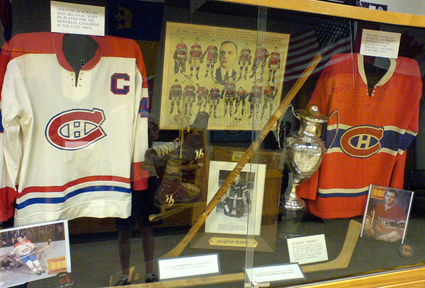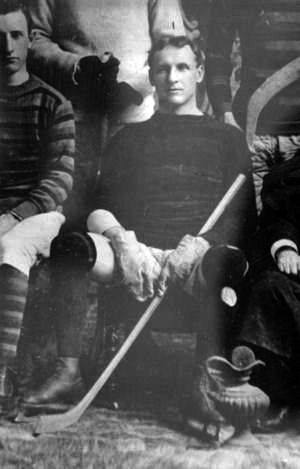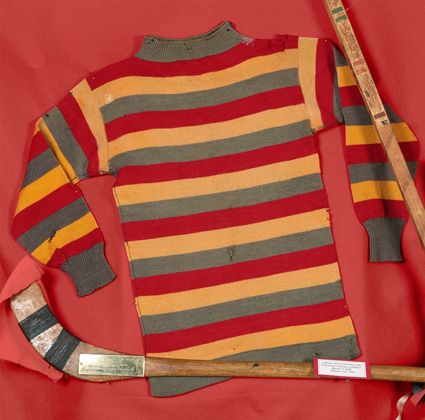Saturday, October 22, 2011
2003-04 Krefeld Penguins Terry Yake Jersey
Born on this date in 1968, Terry Yake played for the Brandon Wheat Kings of the Western Hockey League beginning in the 1984-85. During his third season he impressed with 44 goals and 102 points in 71 games, which led to him being drafted by the Hartford Whalers during the 1987 NHL Entry Draft. He returned to the Wheat Kings for one more season where he led the club in scoring for the second year in a row with 140 points to place sixth overall in league scoring.
He spent the following season of 1988-89 honing his craft with the Binghamton Whalers of the AHL, where he duplicated his feat of leading his team in scoring while placing sixth overall in the league scoring race when he scored 39 goals and 95 assists in 75 games. He also made his NHL debut with the Whalers when he saw action in a pair of games.
One would have expected that a 95 point AHL season would have qualified him for a place in the NHL for 1989-90, but he once again spent the majority of his season back in Binghamton. He once again made it onto the ice with the Whalers for a pair of games during which he registered his first NHL point with an assist.
For the 1990-91 season Yake moved to the Springfield Indians, still in the AHL. There he easily scored more than a point per game as he scored 35 goals and 77 points in 60 games. The Whalers saw fit to give him 19 NHL games which saw him score his first NHL goal on his way to 5 points and an additional 6 playoff games. With the Whalers ousted from the playoffs, Yake returned to Springfield where he placed second in team playoff scoring with 18 points in 15 games as the Indians captured the Calder Cup as AHL playoff champions.
With that kind of offensive output and a playoff championship behind him, Yake found himself...
right back in the AHL yet again for the 1991-92 season. His season concluded with 55 points in 53 games with Springfield and 15 games and 2 points with Hartford. The scales finally tipped in favor of the NHL when he played 16 games in Springfield and 66 in Hartford. Thanks to the added responsibility and playing time he received this season, he responded with 22 goals and 53 points.
Yake then benefitted from the expansion of the NHL, as he was claimed by the Mighty Ducks of Anaheim who were more than happy to have Yake play in each and every game of the 1993-94 season. He rewarded the Ducks by leading the team in scoring with 52 points.
Just prior to the 1994-95 season, Yake was dealt to the Toronto Maple Leafs, but would only see action in just 19 games. After playing a pair of regular season games with the IHL's Denver Grizzlies, Yake was a key part of the Grizzlies run through the playoffs, contributing 15 points in 17 games as Denver captured the Turner Cup.
Yake again led his team in scoring for 1995-96, this time with the Milwaukee Admirals of the IHL with 88 points in 70 games. He was signed by the Buffalo Sabres for 1996-97 and spent the season with their top affiliate, the Rochester Americans of the AHL. There, he came second in the league scoring race after leading the Americans with 34 goals and 101 points in 78 games.
That performance earned Yake another stint in the NHL, this time with the St. Louis Blues. He saw action in 65 games in 1997-98 and divided time between St. Louis (60 games) and the Worcester Ice Cats of the AHL (24 games) in 1998-99. The Following season Yake started the season with the Blues before being claimed off of waivers by the Washington Capitals after 26 games. He would play an additional 35 games with Washington that season.
The 2000-01 season once again saw Yake split time between the NHL and AHL as he played 12 games with the Capitals and 55 with the Portland Pirates in what would be his final season of hockey in North America.
For the 2001-02 season Yake travelled across the Atlantic to Germany's DEL where he joined the Essen Mosquitoes, whom he naturally led in scoring that season, a common thread throughout his time in North America. He would play two more seasons in Germany, the first with the Nuermberg Ice Tigers, leading them in scoring for 2002-03, and the Krefeld Penguins in 2003-04.
He migrated to Switzerland's second division for 2005-06 for the first of three seasons with Visp, which included a strong 2006-07 season during which he led the club in scoring (the sixth time in his professional career he would be the team leader) with 79 points in 45 games in a typically shorter European season. Yake's final season as a professional was the 2008-09 season he spent with Lausanne before he retired for good as a player.
Yake's final NHL totals are 403 games played with 77 goals and 120 assists for 197 points.
Today's featured jersey is a 2003-04 Krefeld Penguins Terry Yake jersey as worn during Yake's time in the German DEL following his NHL days. It has the expected sponsor logos for a European jersey, but in this case they do not overwhelm the team identity in the way many Scandinavian jerseys do. We particularly like the stars in the sleeve stripes for an added dash of excitement as well as the symmetrical chevron stripe on the front, a very underutilized design element in the NHL.
Bonus jerseys: While researching this post we came across a pair of jerseys worth noting. First is a 1990-91 Winnipeg Jets Terry Yake jersey which was worn by Yake in training camp in 1995 with the Jets after being released by the Maple Leafs. Yake did not make the Jets squad and spent the season playing with the Milwaukee Admirals.
When purchasing game used jerseys it is always advisable to do your homework first in order to avoid any unwanted surprises, such as paying for a jersey which later turns out to have never been worn in an NHL regular season game. Don't get us wrong, it's a high quality, great looking jersey genuine game worn jersey, but having only been worn in preseason games and never in the regular season will affect it's value and you should not overpay for it. This jersey was auctioned off back in 2007 with a starting price of just $100 and attracted three bids, eventually selling with a high bid of $200, a fair price for all parties involved. For comparison, a year earlier a similar Jets regular season game worn jersey sold for $486.79.
Our next item of interest is a 2010-11 Hartford Whalers Terry Yake jersey worn in a Whalers alumni game. Again, a chance to obtain a terrific looking jersey actually worn by Yake, but another instance of the buyer needing to know what they are getting before paying top dollar. Clues to the origin of this jersey lie in the patch for the 2011 Whale Bowl, and outdoor game put on by the AHL's Connecticut Whale that featured an NHL alumni game as part of the festivities. The other main clue that this is not a 1990's game worn jersey is the brand logo on the rear of the jersey is not a CCM jersey as worn by Hartford.
Further research reveals that Yake's years with the Whalers came after the Pucky the Whale logos were removed from the shoulders and that the green waist stripe had changed to white by the time Yake arrived in Hartford. While the jersey is a fun jersey and an accurate reproduction of a 1979-1985 Whalers jersey, an informed buyer armed with the knowledge that it is a modern reproduction - yet actually worn by Yake - will pay accordingly and not be duped into believing he is getting a genuine early 1990's game worn jersey even if an unscrupulous seller is able to remove the "2011" patch in an effort to deceive.
Labels:
Krefeld Penguins,
Yake Terry
Friday, October 21, 2011
1987-88 Hartford Whalers Sylvain Turgeon Jersey
On this date in 1987, brothers Sylvain and Pierre Turgeon faced each other for the first time.
Sylvain had a four year head start on his younger brother Pierre, making his NHL debut in 1983-84 after being drafted 2nd overall. Sylvain stepped straight into the Hartford Whalers lineup and playing 76 games as a rookie, scoring 40 goals and 76 points right out of the chute. He continued his prolific output with 31 goals and then 45 in 1985-86. His total dropped to 23 the following season, but it was enough to give the left winger a 139 goal head start on his brother Pierre, who would join the league the following season.
When they did meet for the first time, Buffalo Sabres rookie Pierre scored his first two NHL goals during the game, but Sylvain's Whalers got the better of the Sabres and the two points in the standings with a 5-3 win.
Despite the two goals in only the Sabres fourth game, Pierre was unable to duplicate Sylvain's rookie season, finishing with 14 goals in 76 games. He found his game over the next couple of seasons though, scoring 34 in 1989-90 and matching Sylvain's 40 with 40 of his own in 1989-90. Another 30 goal season followed with 32 and then another 40 in the 1991-92 season, 38 of which came after being dealt to the New York Islanders.
Pierre then claimed top honors in the family with his career year of 58 goals and 74 assists for 132 points in 1992-93 which placed him fifth overall in league scoring.
Meanwhile, Sylvain's offensive numbers were greatly diminished by a series of injuries. In 1988-89 he played in only 42 games, his last season in Hartford. His last noteworthy NHL season came the following year with the New Jersey Devils with the fourth 30 goal season of his career.
Two seasons in Montreal followed, but Sylvain was limited to 75 games and 14 goals combined over the two years.
While Pierre was tearing up the league in 1992-93, Sylvain was experiencing the growing pains of playing with the expansion Ottawa Senators, as the inept club struggled through a 10-70-4 season, although Sylvain did lead the club with 25 goals.
Two more seasons in Ottawa, again limited in games to 42 and then just 33, cut his goal totals to just 11 each season, the last of his NHL career.
While Pierre continued to be a highly productive player with the Islanders (94 points in 1993-94), Montreal (96 in 1995-96) and five solid seasons with the St. Louis Blues, Sylvain spent one season with Houston of the AHL before continuing his career in Europe for the next six seasons, primarily in the German DEL, as well as Switzerland and even Italy.
Sylvain's career NHL totals are 669 games played, 269 goals and 226 assists for 495 points.
Following Pierre's time with the Blues, his career continued with five more seasons, three with the Dallas Stars and a final two with the Colorado Avalanche, with whom he would pass the 500 goal plateau and finish his career with 1,327 points in 1,294 games played.
Today's featured jersey is a 1987-88 Hartford Whalers Sylvain Turgeon jersey. The Whalers redesigned their sweaters when they changed their name from the New England Whalers to the Hartford Whalers as one of the conditions to their being accepted into the NHL after their seven seasons in the WHA. With the change to the name "Hartford" a new, instantly recognizable new logo was designed with the clever use of negative space creating a subtle "H" in the logo.
While their jerseys may have appeared to stay the same to the casual observer, the Whalers jerseys actually underwent a series of alterations. The green trim across the bottom was done away with and the arm stripes changed from angled to straight and back again before becoming straight once more!
The same season they dropped the green stripe across the bottom, someone had the horrible idea of dropping the beloved "Pucky the Whale" secondary logo from the shoulders, and the Whalers jerseys were never quite the same ever again.
Bonus Jersey: Today's bonus jersey is a 1987-88 Buffalo Sabres Pierre Turgeon jersey, as worn by Pierre during his rookie season when he faced Sylvain for the first time in his career.
Today's video segment features Pierre Turgeon's 1000th NHL point.
Here are highlights from the first Ottawa Senators game in the modern era, where Sylvain Turgeon scored the game winning goal versus the Montreal Canadiens.
Thursday, October 20, 2011
1997-98 Detroit Red Wings Slava Fetisov Jersey
By the time he completed the 1988-89 season in the Soviet Championship league, Viacheslav Fetisov had won 11 Soviet Championships, a pair of Player of the Year awards, two European Junior golds, three World Junior golds, six golds, one silver and one bronze medal at the World Championships, a Canada Cup championship and two Olympic gold medals plus one silver, but there was one championship trophy he was not eligible to compete for - the Stanley Cup.
Around the time of the 1989 World Championships, Sergei Priakin, considered expendable by the Soviet National Team, was allowed by Soviet authorities to play for the Calgary Flames in the NHL. Looking to escape the rigid Soviet system and the iron hand of coach Viktor Tikhonov, whose 11 month a year training schedule had grown more than tiresome, the now 31 year old Fetisov also requested to be allowed a move to the NHL.
He met with great resistance at first, but with a new policy of openness now taking hold in the Soviet Union, as well as the Soviet officials desire for an influx of cash, Fetisov, along with seven other players, were allowed to leave for North America, with the stipulation that they continued to compete internationally for the Soviet Union.
Originally drafted by the Montreal Canadiens in 1978, Fetisov's name was put back into the draft in 1983 when he was selected by the New Jersey Devils. The new Soviet players had an immediate impact on the NHL, even as they dealt with various instances of culture shock and a less than warm welcome by Canadians who felt their jobs were being taken.
"For the first 25 games or so, my partners didn't understand my style and I didn't understand the style of the NHL, but we all learned a lot and I thought I had a very good second half," said Fetisov. "It was tough to get out of the country, to fight against a Communist system. And it was tough when I got here (the NHL) for a couple years," Slava admitted. "Many times I would think, 'Why am I here; why did I do it?' I was a big player in Europe and people knew me. Here, all of a sudden, I had to struggle. But I keep telling myself I have to fight through this stuff."
Fetisov scored a career high 42 points during his first North American season, while compatriot Sergei Makarov was named the recipient of the Calder Trophy.
The move to North America had great meaning to Fetisov, beyond just the opportunity to earn a larger paycheck. "It was a victory against a whole system," Fetisov said. "It was not easy. You always have to fight for everything and I fought for everything I have in hockey. I also won the biggest fight away from hockey. That was the fight against communism, the fight for freedom of choices."
In keeping with the agreement, following the Devils elimination from the Stanley Cup playoffs, Fetisov won his seventh and final gold medal at the 1990 World Championships.
He would play four additional seasons for New Jersey, as well as his final appearance for the Soviet Union in 1991 World Championships, where he would the second bronze medal of his career, prior to a move to the Detroit Red Wings during the 1994-95 season.
Once in Detroit, the Red Wings advanced to the Stanley Cup Finals, only to lose to Fetisov's former club, the Devils. In 69 games with Detroit the following season, Fetisov would equal his NHL career high with 42 points. Additionally, the Red Wings would again make a strong playoff push, eventually losing in the Conference Finals to the eventual champion Colorado Avalanche. Prior to the start of the following NHL season, Fetisov would conclude his international career by playing for Russia for the first and only time at the 1996 World Cup of Hockey.
It all came together for the Red Wings in 1997, as Fetisov, as part of the famed "Russian Five", won the 1997 Stanley Cup with a four game sweep of the Philadelphia Flyers.
The victory made him and long-time teammate Igor Larionov the only men to have ever won the Stanley Cup, the World Championship, an Olympic gold medal, the World Junior Championship and the Canada Cup. The Canada Cup evolved into the World Cup of Hockey, and Joe Sakic and Scott Niedermayer joined the two Russians as winners of the five most important championships in the world of hockey.
Following the Stanley Cup victory celebrations in 1997, Fetisov was involved in a limousine crash which ended the career of teammate Vladimir Konstantinov and quite nearly cost him his life. Fetisov escaped with relatively minor injuries and was able to continue his playing career.
Shortly after the following season began, Fetisov competed in his 500th NHL game, a 3-3 tie against the St. Louis Blues on this date in 1997. It would prove to be another successful season for Detroit, which concluded with an emotional repeat championship for the Red Wings which ended in a memorable scene on the ice as a wheelchair bound Konstantinov was included in the Stanley Cup presentation following the Red Wings victory. It would be the final game of Fetisov's NHL career.
He would retire with 367 games played in the Soviet Union, scoring 339 points, and 546 games in the NHL, mainly due to the much longer NHL schedule despite playing two seasons more in the Soviet Union, in which Fetisov scored 228 points.
Fetisov has won numerous awards in his home country, including the Order of Lenin in 1988 and even had an asteroid named for him. In the world of hockey, Fetisov was inducted into the Hockey Hall of Fame in 2001. "I just couldn't believe it when they called me," said Viacheslav. "It's a great honour. You play all your life to get the recognition and it feels great, especially being a Russian-born hockey player and spending most of the best years back in Europe. It's a great honour to be in same category as other legends. I have achieved everything I dreamed of in my childhood," said Fetisov.
In 2008, Fetisov was named to the IIHF's International Centennial All-Star Team, which named but five players to create the finest starting lineup of the century, with Fetisov receiving 54 of a possible 56 votes, with no other player earning more than 38.
Today's featured jersey is a 1997-98 Detroit Red Wings Viacheslav Fetisov jersey as worn during his 500th NHL contest. This jersey is highlighted by the "Believe" patch worn in support of Konstantinov and team masseur Sergei Mnatsakanov in it's regular season location of the upper right chest. This patch is better known for it's location on the left sleeve, where it was moved to make way for the 1998 Stanley Cup Finals patch.
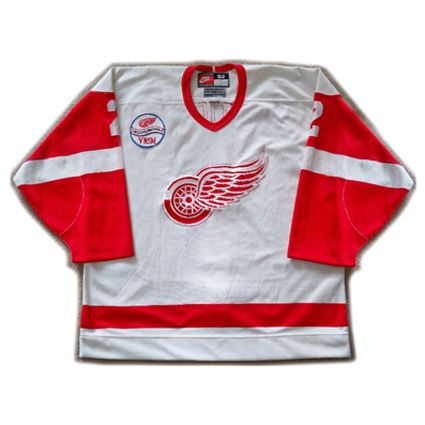
Today's video segment contains footage from the Slava Fetisov Farewell Hockey Game which took place in Russia. See if you can recognize any NHL stars in the footage.
In this brief highlight, Fetisov slices and dices Team Canada and scores easily after a coast to coast rush.
We conclude today with a tribute video to Fetisov, which includes some amazing footage of his time in the Soviet Union, much of which we have never seen before as well as some of the original red and green New Jersey Devils jerseys. Highly recommended, but perhaps with the sound off...
Labels:
Detroit Red Wings,
Fetisov Viacheslav
Wednesday, October 19, 2011
1966-67 Boston Bruins Bobby Orr Jersey
On this date in 1966 Bobby Orr played in his first NHL game, scoring his first point with an assist as the Boston Bruins defeated the Detroit Red Wings 6-2 in Boston.
He would win the Calder Trophy during his first season with the Bruins after scoring 41 points in 61 games. He would miss nine games late in the season with a knee injury, foreshadowing the injury problems that would plague his career. Prior to Orr's arrival, the Bruins had missed the playoffs for seven consecutive seasons and, while they would not make the post-season during Orr's rookie season, they would make the playoffs in every subsequent season of Orr's career in Boston.
Despite only playing in 46 games of the 1967-68 season, Orr would win the first of eight consecutive Norris Trophies. Back on track in 1968-69, he would play in 67 games and top 20 goals for the first time with 21 and total 64 points.
Orr would explode the following season, scoring 33 goals and adding a whopping 87 assists to total 120 points, six short of the league record and become the first and only defenseman to lead the NHL in scoring, which would net him the Art Ross Trophy. Additionally, he was named the winner of the Hart Trophy as league MVP. The Bruins would advance through the playoffs, eventually winning the Stanley Cup in overtime of Game 4, a goal captured in an iconic photograph of Orr flying through the air in celebration. Following the playoffs, he would be named the recipient of the Conn Smythe Trophy, making him the first player to win four major NHL awards in the same season.
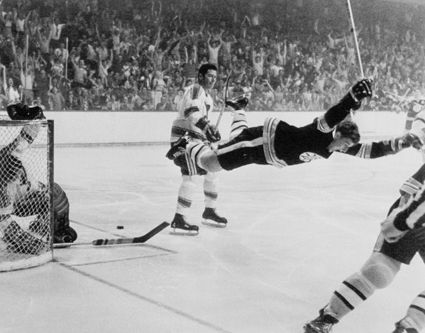
Orr, a defneseman and considered by many to be the greatest player in the history of the NHL, was signed by the Bruins at the age of 14. League rules at the time dictated that Orr could not play in the NHL until turning 18. Orr bided his time playing for the Oshawa Generals of the Ontario Hockey League and, in his final season in junior hockey, scored 94 points in 47 games, an average of two points per game, an unheard of average for a defenseman.
Orr, wearing #27 during his first NHL training camp
He would win the Calder Trophy during his first season with the Bruins after scoring 41 points in 61 games. He would miss nine games late in the season with a knee injury, foreshadowing the injury problems that would plague his career. Prior to Orr's arrival, the Bruins had missed the playoffs for seven consecutive seasons and, while they would not make the post-season during Orr's rookie season, they would make the playoffs in every subsequent season of Orr's career in Boston.
Bobby Orr during the 1966-67 season
Despite only playing in 46 games of the 1967-68 season, Orr would win the first of eight consecutive Norris Trophies. Back on track in 1968-69, he would play in 67 games and top 20 goals for the first time with 21 and total 64 points.
Orr would explode the following season, scoring 33 goals and adding a whopping 87 assists to total 120 points, six short of the league record and become the first and only defenseman to lead the NHL in scoring, which would net him the Art Ross Trophy. Additionally, he was named the winner of the Hart Trophy as league MVP. The Bruins would advance through the playoffs, eventually winning the Stanley Cup in overtime of Game 4, a goal captured in an iconic photograph of Orr flying through the air in celebration. Following the playoffs, he would be named the recipient of the Conn Smythe Trophy, making him the first player to win four major NHL awards in the same season.

Orr would top his league leading point total from the previous season with 139 points in 1970-71, including a league leading 102 assists, 26 more than the next closest player, and place second in the scoring race behind Bruin's teammate Phil Esposito while winning the Hart Trophy for the second time. Orr would record a plus-minus rating of +124 that season, an NHL record that still stands today.
1971-72 would see Orr play in 76 games and equal his 37 goals from the previous season while totaling 117 points. Orr and the Bruins would capture their second Stanley Cup and Orr would win his fifth consecutive Norris Trophy, his third consecutive Hart Trophy and his second Conn Smythe Trophy.
1972-73 saw another 100 point season after returning from knee surgery following the Stanley Cup, which forced Orr to miss the 1972 Summit Series against the Soviet Union after being named to Team Canada.
The Bruins would return to the finals in 1973-74 following a regular season in which Orr would score 32 goals and 90 assists for 122 points followed by another 18 points in 16 playoff games.
Orr would once again win the NHL scoring race in 1974-75, capturing the Art Ross Trophy for the second time after a career high 46 goals, becoming the first defenseman to ever score 40 goals, combined with 89 assists for 135 points. He would be named to the NHL First All-Star Team for the eighth consecutive season, win his eighth consecutive Norris Trophy, play in his seventh NHL All-Star Game and win his first Lester B. Pearson Award.
His multiple knee surgeries would catch up to him, limiting him to only 10 games of the 1975-76 season. While essentially playing on one knee, Orr would compete for Team Canada in the 1976 Canada Cup, earning rave reviews and being named tournament MVP in the last hurrah of his storied career.
A move to the Chicago Black Hawks followed for the next two seasons but he totaled just 26 games and 27 points in 1976-77 and 1978-79.
His final career totals are 657 games played, 270 goals and 645 assists for 915 points after ten seasons in Boston and the two in Chicago. At the time of his retirement, Orr was the leading defenseman in NHL history in goals, assists and points. The only players who have averaged more points per game than Orr are Wayne Gretzky, Mario Lemieux and Mike Bossy - all forwards.
Orr's speed, acceleration and creative offensive ability, combined with his toughness and defensive skills revolutionized the position of defense and changed the game forever. He also moved beyond the world of hockey, becoming a mainstream celebrity in the United States.
While we have given you a brief overview of the game-changing career of Bobby Orr, entire books are devoted to his career and the impact he had on the NHL, and we here at Third String Goalie recommend Searching for Bobby Orr.
Today's featured jersey is a 1966-67 Boston Bruins Bobby Orr jersey as worn during Orr's rookie season. This particular jersey recently sold at auction for $191,200, clearly putting it in the upper echelon of historic hockey jerseys, as the sale price currently ranks third behind only the $1.27 million for Paul Henderson's 1972 Team Canada jersey and $250,000 for a Wayne Gretzky jersey. A 1974-75 Orr jersey is the only other jersey to ever sell for over $100,000 when it sold for $115,000, giving Orr two of the top four places.
When purchasing a Bobby Orr Bruins jersey, please be aware that Orr did not wear his name on the back of any Boston Bruins jersey during his career, with the only exception being when they were temporarily added for national TV games, as was the practice back then. Quite often Orr jerseys are sold on ebay or other online stores with Orr's name incorrectly on the back of the jersey, as if his iconic #4 wasn't enough.
Even during Orr's first season in Chicago no names were used on the back, making just the final six games of his career with the Black Hawks in 1978-79, a sad and unfortunate end to a great career and not exactly worthy of recreating for your collection, and the 1976 Canada Cup the few times Orr regularly wore his name on the back of a jersey outside of the NHL All-Star Game.
Today's video selections is the surprising find of the 1979 Bobby Orr Jersey Retirement Ceremony, somewhat oddly scheduled for the night of an exhibition game against the Soviet Wings. We can't recall any other jersey retirement scheduled for an exhibition game before. One would think that in 1979 any Soviet team on it's own would be enough of a draw to fill the building.
Labels:
Boston Bruins,
Orr Bobby
Tuesday, October 18, 2011
1986-87 Vancouver Canucks Doug Lidster Jersey
Born on this date in 1960, Doug Lidster played four seasons at Colorado College and made mark right off the bat with 18 goals and 43 points as a freshman, which led to his being drafted by the Vancouver Canucks in the 1980 NHL Entry Draft. Three more consistent seasons followed capped off in 1982-83 with 56 points in 34 games.
The following year Lidster became a member of the Canadian National Team, which led to his participation in the 1984 Olympics in Sarajevo, Yugoslavia. At the conclusion of the games, Lidster made his NHL debut by playing in 8 games with the Canucks.
Lidster and Mario Gosselin at the 1984 Olympics for Canada
Lidster would then begin a run of nine years of consistency and durability patrolling the blueline for the Canucks, as he would play a minimum of 63 games and have five seasons of over 70 games. Additionally, his point production was between 22 and 38 points every one of those nine years, save the 1986-87 season when he set a career highs with 12 goals and 51 assists for 63 points, 25 points more than any other season of his career.
Lidster was one of three Canucks tri-captains in 1990-91
Lidster was then dealt by the Canucks to the New York Rangers for the magical 193-94 season, during which they not only won the Stanley Cup, but did so by defeating the very same Canucks who had dealt Lidster away. Thanks to the extensive travel the Canucks endured as a west coast team and the low playing time he had gotten with the Rangers, Lidster described winning the cup against the Canucks as "bittersweet". "Once we won and we were shaking hands, I realized that I knew the Canucks players better than his own teammates."
For the 1994-95 season, Lidster was once again on the move, this time to the St. Louis Blues. For the second season in a row, Lidster was limited to under 40 games, which had the expected result on his scoring numbers.
Oddly, St. Louis traded him back to the Rangers for a second term. Now playing a more defensive role, his number of games played diminished over the next three seasons from 59 to 48 and then 36.
He would then sign with the Dallas Stars late in the 1998-99 season as a free agent after spending the majority of his season with the Canadian National Team, and while he was limited to just 17 regular season games, he did participate in 4 playoff contests as Dallas would go on to win the Stanley Cup that year.
Lidster's final NHL totals are 75 goals and 268 assists for 343 points in 897 games.
During his career he also participated in the World Championships on three occasions, first in 1985 winning a silver medal, and again in 1990 and 1991, on which occasion he won a second silver medal.
Today's featured jersey is a 1986-87 Vancouver Canucks Doug Lidster jersey. This style jersey came immediately following the highly controversial "flying V" style worn from 1978 to 1985. After that unconventional style ran it's course, the Canucks logo was promoted from the sleeves to the main crest in a more traditional manner, but still sporting the aggressive colors of the "flying V'. The V shape still appeared on the shoulders and pants, but in a manner certainly less "in your face" as the previous style.
This new version would last four seasons until and even more traditional jersey would be adopted, which included reverting to a white home jersey rather than gold, as was the case for for the previous 11 seasons.
Labels:
Lidster Doug,
Vancouver Canucks
Sunday, October 16, 2011
The Oldest Hockey Sweater in the World - 1894 Queen's University Guy Curtis Jersey
Founded on this date in 1841 in Kingston, Ontario, 26 years before Canada even became a country, Queen's University is considered one of the finest academic institutions in Canada.
Today, "Queen's" as it is commonly referred to, has roughly 21,500 students and annually receives 25,000 applications for it's 3,400 openings for new students. It currently consists of 17 different schools, some of which are Arts and Sciences, Music, Computing, English, various Health Sciences, Law, Business and Education.
It's founder was Thomas Liddell, who arrived from Scotland with a Royal Charter from Queen Victoria, and established Queen's College as an educational institution. In 1991, the the University celebrated it's 150th anniversary, which was highlighted by a visit from Prince Charles and his wife Diana.
The Queen's University athletics program, which dates back to 1873, is among the largest of it's kind in Canada and it's teams are known as the Golden Gaels, a name which came into being in 1947. Prior to that, they were known as "The Tricolor" in recognition of their school colors of blue, gold and red.
It also plays and important role in the creation of modern ice hockey and it's history. One common claim is that a match between Queen's and the Royal Military College on Kingston Harbour in 1886 was the origination of game of hockey, although similar claims also come from earlier events in Montreal, Ottawa and Halifax.
The Queen's University hockey club champions of 1888
Although their game may not have been the first, Queen's and the Royal Military College still play each other annually for the Carr-Harris Cup in the world's oldest hockey rivalry.
Queen's University and the Royal Military College competing for the Carr-Harris Cup in throwback jerseys
Regardless of where it may have began, hockey continued to be played at Queen's and on March 9, 1895 Queen's University, champions of the Ontario Hockey Association, became only the second challengers for the brand new symbol of hockey supremacy in Canada, the Stanley Cup.
In a single game challenge, Queen's was turned away by the host Montreal Hockey Club by a score of 5-1 with the lone Queen's goal scored by a player named McKay.
The 1895 Queen's University hockey club
March 14, 1899 saw Queen's University again challenge for the Stanley Cup, once more traveling to Montreal, only this time to take on the Montreal Shamrocks of the Canadian Amateur Hockey League in another single game challenge. The results were very much the same as the previous challenge, with Queen's being turned away 6-2, with their goals being scored by G. P. Dalton and R. R. Harris.
"The Shamrocks are altogether overestimated, and I am sure that if we had been playing in the Quebec League with them this year we could have won out without much trouble. The greatest drawback to Queen's was the size of the rink, which difficulty could be overcome with a few practices upon it," captain Guy Curtis was quoted as saying the newspapers the following day.
By 1906, Queen's University were now members and champions of the Ontario Hockey Association, giving them the right to make Queen's third and final challenge for the Stanley Cup, increasingly the property of professional clubs.
Queen's faced an uphill battle from the start, as their opponents were the legendary Ottawa Silver Seven (later the Senators) who had been in possession of the Stanley Cup since March of 1903 and had five future Hockey Hall of Famers on it's roster and had successfully fended off nine consecutive cup challenges prior to facing Queen's.
Undaunted, Queen's travelled to Ottawa for a best-of-three series which began on February 27th, 1906. Queen's kept Game 1 close just past the halfway mark, when the score was 5-4, only to have the mighty Silver Seven romp away to a 16-7 win a Harry Westwick, Alf Smith, Harry Smith and Frank McGee each scoring four goals apiece.
Game 2 was another romp for the Ottawa Hockey Club, as they clinched the series and retained the cup with a 12-7 victory.
The 1906 Queen's University Stanley Cup challengers
Three years later, with the Stanley Cup now awarded to professional teams, a new trophy was created for the top amateur team in Canada, the Allan Cup. It was awarded to the Ottawa Cliffsides as champions of their league. One week later, on March 13, 1909, they were challenged by Queen's University, who won the match 5-4 to take over possession of the new trophy, as shown in the upper left of the photo below.
The 1909 Queen's University hockey club, holders of the Allan Cup
The modern day Golden Gaels hockey program currently participates in the Ontario University Athletics conference where they have competed for the Queen's Cup since the University donated it to the conference in 1903. Queen's have won the cup six times, those coming in 1904, 1906, 1909, 1910, 1914 and then, following a 67-year drought, again in 1981.
In the 1940's, Captain James Sutherland, a staunch supporter of Kingston as the location of the birth of hockey, proposed that a study be done on the origin of hockey, which soon evolved into a movement to form a hockey hall of fame. With it's central location between Montreal and Toronto, Kingston became the chosen location of what is now the International Hockey Hall of Fame.
One of the main features of the museum is the exhibit dedicated to former coach and well-known television commentator on Hockey Night in Canada, Don Cherry, who is a native of Kingston. On display is one of Cherry's trademark loud sport jackets and high-collared shirts as well as various items from his days as a youth, junior and professional player and coach.
Don Cherry
The main floor of the hall is where you can find the "Original Six" collection, which features sweaters, sticks and photographs of all-time greats such as Henri Richard, Jean Beliveau, Gordie Howe and Johnny Bower.
Montreal Canadiens jerseys from Henri Richard and Jean Beliveau
The "International Exhibit" highlights some of the great moments in international hockey, and some of the artifacts include a gold medal won by Canada at the 1924 Winter Olympics, a stick signed by the Soviet team from the 1972 Summit Series and a collection of various national team jerseys.
Finally, the "Kingston Collection" highlights some of Kingston's greatest players, such as Syl Apps, Bill and Bun Cook, Doug Gilmour, Kirk Muller, Alyn MacCauley and Jay McKee. Also in the second floor gallery is a Wayne Gretzky Edmonton Oilers jersey from the Oilers first season in the NHL and a trio of WHA Houston Aeros jerseys from Mark, Marty and Gordie Howe.
Jerseys from the Howe family during their days with Houston of the WHA
As interesting as all those items truly are, the one thing that stands out to us as the most important and historically significant item is today's featured jersey, a 1894 Queen's University Guy Curtis jersey, reputed to be the oldest hockey jersey in existence.
Curtis was the premier athlete at Queen's University during the 19th century. Before the modern eligibility rules, Curtis played for the football team for 12 years, from 1886 to 1898, and as team captain and coach, drew up complex plays while leading Queen's to it's first Dominion Football Championship in 1893.
He was also captain of the school's hockey team and twice participated in the first two of their Stanley Cup challenges as well as playing in ten Ontario Senior Hockey Championships, winning five of them before his playing career ended in 1902.
Guy Curtis
Curtis is credited with being instrumental in developing both football and hockey in Canada, as well as introducing hockey to the United States, as Queen's University was known for it's exhibition matches in American cities during his time with the club. He is so well thought of at Queen's that his name appears in a verse of the school song.
The wool sweater is in the classic barberpole style of the early days of hockey, executed in the Queen's University colors of blue, red and gold, with time having taken it's toll on the original shade of blue in particular, as it now appears more olive green due to fading of the pigment in the blue.
Special thanks to Mark Potter, President of the International Hockey Hall of Fame, for the assistance with information and photos of today's featured jersey.
Subscribe to:
Comments (Atom)

